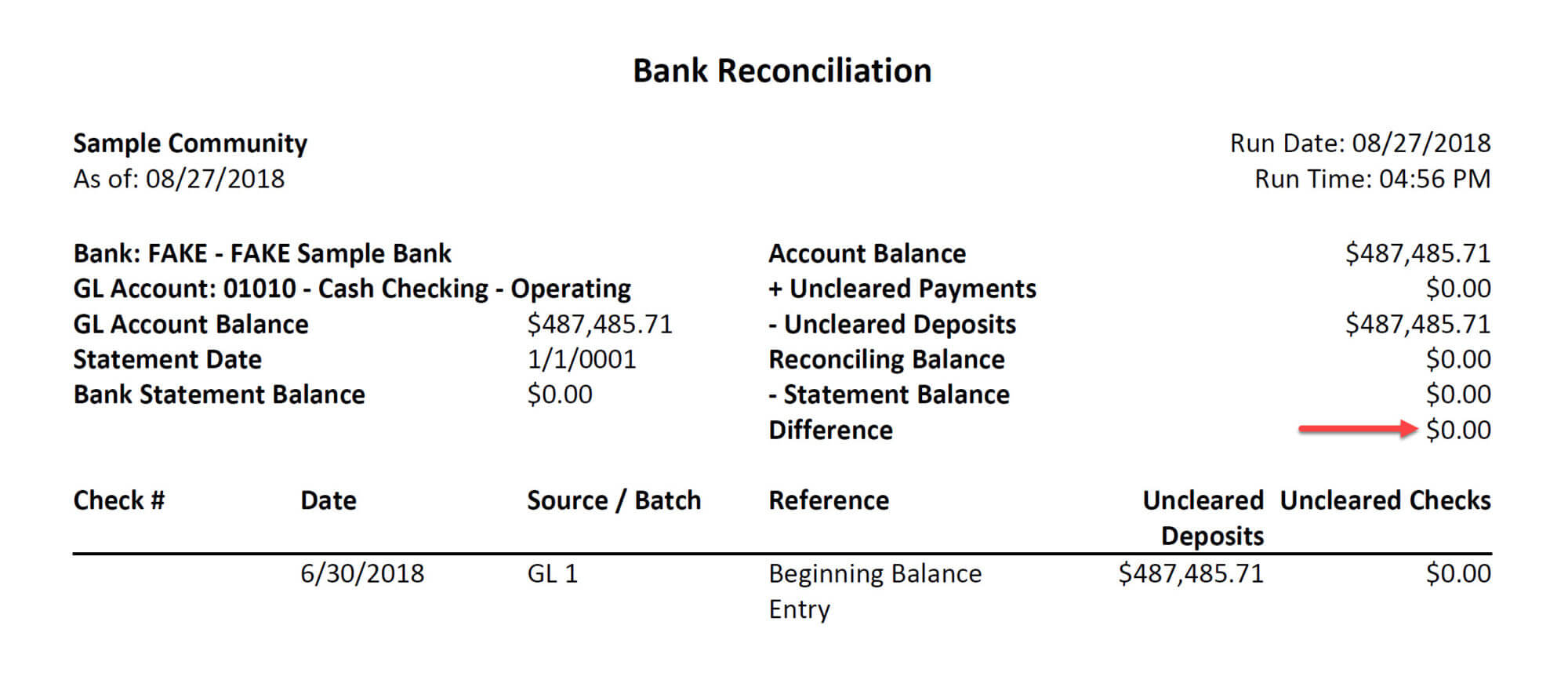

Finance
What Does OOP Mean In Health Insurance?
Modified: December 30, 2023
Learn what OOP means in health insurance and how it affects your finances. Understand the financial implications of out-of-pocket expenses in healthcare.
(Many of the links in this article redirect to a specific reviewed product. Your purchase of these products through affiliate links helps to generate commission for LiveWell, at no extra cost. Learn more)
Table of Contents
Introduction
When it comes to health insurance, understanding the terminology and concepts associated with the coverage can be overwhelming. One common term you may come across is “OOP,” which stands for “Out-of-Pocket.” OOP refers to the expenses that you, as the insured individual, are responsible for paying directly, on top of your monthly insurance premiums.
In this article, we will delve into the world of OOP in health insurance, exploring the various types of out-of-pocket costs you may encounter, such as deductibles, copayments, and coinsurance. We will also discuss the maximum out-of-pocket limit and the factors that can influence your out-of-pocket costs.
By gaining a comprehensive understanding of OOP in health insurance, you will be able to make informed decisions about your coverage and minimize any financial surprises that may arise.
So, let’s dive in and explore the world of OOP in health insurance. Understanding these key concepts will empower you to effectively navigate the complexities of your health coverage.
Overview of OOP (Out-of-Pocket) in Health Insurance
Out-of-Pocket (OOP) costs are the expenses that you are responsible for paying when receiving medical care, in addition to your monthly insurance premium. These costs can vary depending on your specific health insurance plan.
Health insurance plans typically have a combination of premiums, deductibles, copayments, coinsurance, and maximum out-of-pocket limits. Understanding each of these elements will give you a clear picture of your financial obligations and coverage.
Your insurance premium is the amount you pay on a regular basis to maintain your health insurance coverage. It is separate from your out-of-pocket costs and is typically paid monthly.
The OOP costs, on the other hand, refer to the specific fees or amounts you must pay when you receive healthcare services or purchase medication.
Managing your out-of-pocket costs effectively is crucial in ensuring your healthcare expenses remain affordable. By understanding the different types of out-of-pocket expenses, you can plan and budget accordingly.
In the following sections, we will delve into the various types of out-of-pocket costs you may encounter in your health insurance plan, starting with deductibles.
Understanding Out-of-Pocket Costs
Out-of-pocket costs are the expenses that you are responsible for paying when utilizing your health insurance. These costs can include deductibles, copayments, coinsurance, and sometimes even the full cost of certain services until you reach your maximum out-of-pocket limit.
It’s essential to have a clear understanding of these costs to effectively budget for your healthcare expenses and make informed decisions regarding your medical care.
The first type of out-of-pocket cost to consider is the deductible. A deductible is the amount you must pay out-of-pocket before your insurance starts covering a portion of the costs. For example, if you have a $1,000 deductible and receive a medical service that costs $500, you would need to pay the full $500 until you have reached your deductible. Once the deductible is met, your insurance will begin to cover a portion of the costs.
After the deductible, you may encounter copayments. A copayment, or copay, is a fixed amount you must pay for specific healthcare services, such as doctor visits or prescription medications. For example, your insurance plan may require a $20 copay for each doctor’s visit, meaning you would pay $20 at the time of the appointment, and your insurance would cover the remaining cost.
In addition to copayments, you might encounter coinsurance. Coinsurance is a percentage of the cost of a healthcare service that you are responsible for paying after you have met your deductible. For instance, if your insurance plan has a 20% coinsurance, you would pay 20% of the cost of a medical service, and your insurance would cover the remaining 80%.
Lastly, health insurance plans often have a maximum out-of-pocket limit. This limit is the maximum amount of money you would have to pay in a year for covered healthcare services. Once you reach this limit, your insurance will typically cover 100% of your covered healthcare expenses for the remainder of the year.
Understanding these out-of-pocket costs will help you estimate and plan for your healthcare expenses. It’s essential to review your health insurance plan documents and consult with your insurance provider to gain a precise understanding of the specific out-of-pocket costs associated with your coverage.
Types of Out-of-Pocket Expenses
When it comes to health insurance, there are several types of out-of-pocket expenses that you may encounter. These expenses can have a significant impact on your overall healthcare costs. Understanding the different types will help you navigate your health insurance coverage more effectively.
Here are the main types of out-of-pocket expenses you should be aware of:
- Deductibles: A deductible is the amount you must pay out-of-pocket before your insurance starts covering a portion of the costs. It is usually an annual amount that varies depending on your insurance plan.
- Copayments: Copayments, or copays, are fixed amounts that you must pay for specific healthcare services. These fees are typically paid at the time of service, such as doctor visits or prescription medications.
- Coinsurance: Coinsurance is a percentage of the cost of a healthcare service that you are responsible for paying after you have met your deductible. For example, if your coinsurance is 20%, you would pay 20% of the cost, and your insurance would cover the remaining 80%.
- Maximum Out-of-Pocket Limit: Many insurance plans have a maximum out-of-pocket limit, which is the maximum amount of money you would have to pay in a year for covered healthcare services. Once you reach this limit, your insurance typically covers 100% of covered expenses for the rest of the year.
- Non-Covered Services: It’s important to note that some healthcare services may not be covered by your insurance plan. In these cases, you would be responsible for paying the full cost of the service.
Each health insurance plan may have different specifications and variations regarding these out-of-pocket expenses. It’s crucial to thoroughly review your plan documents, including the Summary of Benefits and Coverage, to understand the specific details of your coverage.
By understanding these types of out-of-pocket expenses, you can better estimate and plan for your healthcare costs, making informed decisions about your medical care.
Deductibles
A deductible is an important aspect of health insurance that affects your out-of-pocket expenses. It is the amount you must pay out-of-pocket before your insurance coverage starts contributing to the costs of your healthcare services.
For example, if you have a health insurance plan with a $1,000 deductible, you will need to pay the first $1,000 of medical expenses on your own. This means that any healthcare services you receive, such as doctor visits, lab tests, or prescription medications, will need to be paid in full until you meet your deductible.
After you have paid your deductible, your insurance coverage will kick in, and you will typically only be responsible for copayments or coinsurance, rather than the full cost of the service.
Deductibles can vary greatly depending on your insurance plan. Some plans have high deductibles, while others have lower ones. It’s essential to review your insurance policy documents to understand the specifics of your deductible, along with any exceptions or limitations.
It’s important to note that not all healthcare services require you to meet your deductible. Some insurance plans provide coverage for preventive care services, such as annual check-ups and vaccinations, without having to meet your deductible first.
Understanding your deductible is crucial in managing your healthcare expenses. Consider these key points:
- Plan your budget: Knowing the amount of your deductible helps you plan and set aside funds to cover any out-of-pocket expenses you may incur.
- Consider your medical needs: If you anticipate needing frequent medical services or have a chronic condition, you may want to choose a plan with a lower deductible.
- Evaluate your financial situation: Assess your ability to handle higher upfront costs versus ongoing smaller copayments or coinsurance.
- Shop around for services: Depending on your deductible, you may want to compare prices and shop around for healthcare services to ensure you minimize your out-of-pocket costs.
Understanding how deductibles work and how they impact your out-of-pocket expenses is essential in managing your healthcare costs effectively. Be sure to review your insurance plan and reach out to your insurance provider for any clarifications.
Copayments
Copayments, often referred to as copays, are fixed amounts you must pay for specific healthcare services at the time of your appointment or when filling a prescription. Unlike deductibles, which are a set amount you pay before your insurance coverage kicks in, copayments are a predetermined cost that you are responsible for paying each time you receive a particular service.
For example, your health insurance plan may require a $20 copayment for primary care visits or a $10 copayment for generic prescription medications. This means that you would pay the designated copayment amount directly to the healthcare provider or pharmacy, and your insurance plan would cover the remaining cost of the service.
Copayments are often set at a lower amount compared to the full cost of the service. They serve as a way to share the cost of healthcare between you and your insurance provider.
It’s important to review your insurance plan to understand the specific copayment amounts and which services they apply to. Common services that may have copayments include doctor visits, specialist visits, emergency room visits, diagnostic tests, and prescription medications. Additionally, some plans may differentiate between in-network and out-of-network copayment amounts.
Here are a few key points to keep in mind regarding copayments:
- Copayment amounts can vary depending on the type of service and your insurance plan.
- Copayments are typically a fixed amount, meaning you will pay the same amount for each service.
- Some insurance plans may waive copayments for preventive care services, such as vaccinations or certain screenings.
- If a service is not covered by your insurance plan, you may be responsible for the full cost of the service instead of just the copayment.
By understanding copayments and their role in your health insurance plan, you can better estimate your out-of-pocket costs and plan your healthcare expenses accordingly. As with any aspect of your health insurance, it is beneficial to review your plan documents and contact your insurance provider directly if you have any questions or need clarification on copayment amounts and coverage.
Coinsurance
Coinsurance is a cost-sharing arrangement between you and your insurance provider. It is the percentage of the cost of a healthcare service that you are responsible for paying after you have met your deductible. Unlike copayments, which are fixed amounts, coinsurance is a proportionate share of the expenses.
For example, if you have a health insurance plan with a 20% coinsurance, you would be responsible for paying 20% of the cost of a covered service, while your insurance would cover the remaining 80%. This means that if you undergo a medical procedure that costs $1,000, you would pay $200 (20% of $1,000) and your insurance would cover $800.
Coinsurance primarily comes into play after you have met your deductible. Once you have paid your deductible amount, your insurance coverage kicks in, and you share the cost of your healthcare services with your insurer through coinsurance. The specific coinsurance percentage can vary depending on your insurance plan.
It’s important to note that coinsurance often applies to covered services, meaning services that are included in your insurance plan. It is crucial to review your plan documents to understand which services are subject to coinsurance and what percentage you are responsible for.
Here are a few key points to consider when it comes to coinsurance:
- Coinsurance rates may differ for in-network and out-of-network providers. It is generally more cost-effective to seek healthcare services from in-network providers.
- Some insurance plans have a cap or maximum limit on coinsurance, beyond which your insurance will cover 100% of the remaining costs. This is known as a coinsurance cap or an out-of-pocket maximum.
- Coinsurance can apply to a wide range of healthcare services, including hospital stays, surgeries, specialist visits, and medical procedures.
- Review your plan documents to understand the specific coinsurance details and reach out to your insurance provider if you have any questions or need clarification.
By understanding how coinsurance works and identifying which healthcare services are subject to coinsurance, you can better estimate your out-of-pocket costs and make informed decisions about your medical care. Rely on your plan documents and insurance provider to gain a clear understanding of the coinsurance details specific to your coverage.
Maximum Out-of-Pocket Limit
The maximum out-of-pocket (OOP) limit is an important financial protection feature in health insurance. It is the maximum amount of money you would have to pay out-of-pocket for covered healthcare services in a given year.
Each insurance plan sets its own maximum out-of-pocket limit, which can vary depending on the plan. Once you reach this limit by paying deductibles, copayments, and coinsurance, your insurance plan typically covers 100% of your covered healthcare expenses for the rest of the year.
The maximum out-of-pocket limit represents the cap on your financial responsibility and ensures that your healthcare costs remain manageable, especially in case of unexpected or high-cost medical treatments.
It’s crucial to carefully review your insurance plan documents to understand the specifics of your maximum out-of-pocket limit, as well as any exceptions or limitations that may apply.
Here are a few key points to consider regarding the maximum out-of-pocket limit:
- Expenses that count towards the maximum out-of-pocket limit typically include deductibles, copayments, and coinsurance for covered services. It’s important to note that premiums, out-of-network costs, and non-covered services may not count towards the limit.
- The maximum out-of-pocket limit applies to the period of one year, typically aligning with the calendar year or the duration of your insurance plan.
- Once you reach the maximum out-of-pocket limit, your insurance plan should cover 100% of your covered healthcare expenses. However, it’s essential to verify this with your specific insurance plan, as some plans may still require copayments or coinsurance even after reaching the limit.
- The maximum out-of-pocket limit provides a predictable ceiling for your healthcare expenses, helping you better budget and plan for potential medical costs.
Understanding your maximum out-of-pocket limit is crucial in managing your healthcare costs and ensuring that you do not face excessive financial burdens due to medical expenses. Be sure to review your insurance plan documents, contact your insurance provider with any questions, and consult healthcare providers within your plan’s network to optimize your coverage and minimize out-of-pocket expenses.
Factors Influencing Out-of-Pocket Costs
Several factors can influence your out-of-pocket costs in health insurance. Understanding these factors allows you to estimate and plan for your healthcare expenses more accurately. Here are some key factors to consider:
- Insurance Plan Type: Different types of insurance plans, such as Health Maintenance Organizations (HMOs), Preferred Provider Organizations (PPOs), or High Deductible Health Plans (HDHPs), have varying structures and cost-sharing arrangements. It’s important to understand the specifics of your plan and how it affects your out-of-pocket costs.
- Network Providers: Health insurance plans often have a network of healthcare providers with whom they have negotiated discounted rates. Utilizing in-network providers can lead to lower costs compared to out-of-network providers, as the insurance plan typically covers a higher percentage of the expenses.
- Service Type: The type of healthcare service you require can also impact your out-of-pocket costs. Some plans may classify services into different tiers or categories, with each tier having different cost-sharing arrangements. For example, preventive services are often fully covered, while specialist visits or hospital stays may have higher deductibles or coinsurance.
- Prescription Medications: The cost-sharing for prescription medications can vary depending on the insurance plan. Some plans may have separate copayments or coinsurance for different tiers of medications, while others may require you to meet your deductible before coverage begins.
- Geographic Location: The cost of healthcare services can vary depending on your geographic location. Areas with higher healthcare costs may result in higher out-of-pocket expenses, even with the same insurance plan.
- Plan Specifics: Reviewing your plan documents is crucial in understanding the specific details of your out-of-pocket costs. Factors such as deductibles, copayment amounts, coinsurance percentages, and maximum out-of-pocket limits can all vary depending on your insurance plan.
It’s important to analyze these factors and assess how they align with your healthcare needs and budget. Consider your anticipated medical usage, financial resources, and preferences when selecting a health insurance plan to ensure it meets your specific requirements while minimizing your out-of-pocket costs.
Additionally, it’s advisable to review and compare multiple insurance plans to find the one that best fits your needs. Pay close attention to the plan’s cost-sharing features and coverage specifics to gain a clear understanding of your potential out-of-pocket costs.
Remember that each individual’s healthcare needs and financial situation are unique. Evaluating these factors can help you make informed decisions and effectively manage your out-of-pocket costs in health insurance.
Importance of Understanding OOP in Health Insurance
Understanding out-of-pocket (OOP) costs in health insurance is crucial for several reasons. It empowers you to make informed decisions about your healthcare, budget effectively, and avoid financial surprises. Here’s why understanding OOP costs is important:
1. Financial Planning: Having a clear understanding of your OOP costs allows you to plan and budget for your healthcare expenses. By knowing the potential deductibles, copayments, coinsurance, and maximum out-of-pocket limits, you can set aside funds for medical costs and avoid unexpected financial burdens.
2. Comparing Insurance Plans: Understanding OOP costs enables you to compare different insurance plans effectively. By closely examining the deductibles, copayments, and coinsurance rates, you can determine which plan offers the most comprehensive coverage at the most affordable cost for your specific healthcare needs.
3. Making Informed Decisions: With a clear understanding of OOP costs, you can make informed decisions about your medical care. Knowing the potential expenses for different services and treatments helps you weigh the benefits and costs, seek cost-effective options, and discuss alternatives with your healthcare provider.
4. Avoiding Surprise Bills: Understanding OOP costs helps you avoid unexpected bills and financial shocks. By being aware of your financial responsibilities, you can plan ahead, seek pre-authorization when necessary, and ensure that the services you receive are covered by your insurance plan.
5. Maximizing Coverage Benefits: Knowing your OOP costs allows you to maximize the benefits provided by your insurance coverage. By staying within your network, choosing cost-effective providers, and utilizing preventive care services that are often fully covered, you can keep your out-of-pocket expenses to a minimum while maximizing the value of your insurance plan.
6. Advocating for Yourself: Understanding your OOP costs gives you the knowledge and confidence to advocate for yourself within the healthcare system. You can question excessive charges, negotiate payment plans, and seek cost transparency from healthcare providers. This empowers you to take control of your healthcare spending and ensure that you are receiving appropriate value for the services you receive.
7. Managing Overall Healthcare Costs: By being aware of your OOP costs, you can take proactive steps to manage your overall healthcare costs. This may involve comparing prices for services, considering generic alternatives for medications, exploring telemedicine options, or seeking preventive care to avoid costly medical interventions in the long run.
Understanding OOP costs in health insurance is essential for effectively managing your healthcare expenses and making informed decisions about your medical care. Take the time to review your insurance plan documents, consult with your insurance provider, and stay informed about the specifics of your coverage to ensure that you are prepared and knowledgeable when it comes to your out-of-pocket costs.
Conclusion
Understanding out-of-pocket (OOP) costs in health insurance is an essential aspect of managing your healthcare expenses effectively. By familiarizing yourself with concepts such as deductibles, copayments, coinsurance, and the maximum out-of-pocket limit, you can make informed decisions about your coverage, budget for healthcare expenses, and avoid unexpected financial burdens.
Knowing the specifics of your OOP costs allows you to plan ahead and set aside funds for medical expenses. It also enables you to compare different insurance plans and select the one that best fits your needs and budget.
By understanding OOP costs, you can make informed decisions about your medical care, considering factors such as provider networks, service types, and geographic location to minimize your expenses while receiving quality care.
Understanding OOP costs also empowers you to be an advocate for yourself within the healthcare system. By questioning excessive charges, negotiating payment plans, and seeking cost transparency, you can take control of your healthcare spending and ensure that you receive appropriate value for the services you receive.
Ultimately, managing your OOP costs allows you to make the most of your insurance coverage. By maximizing the benefits included in your plan, seeking preventive care, and making cost-effective choices, you can optimize your coverage and keep your healthcare expenses manageable.
Remember to review your insurance plan documents, consult with your insurance provider, and stay informed about any changes or updates to your coverage. Regularly reassess your healthcare needs and budget to ensure that your insurance plan continues to meet your requirements.
By understanding and managing your OOP costs, you can navigate the complexities of health insurance with confidence, ensuring that your healthcare expenses remain affordable and predictable.














